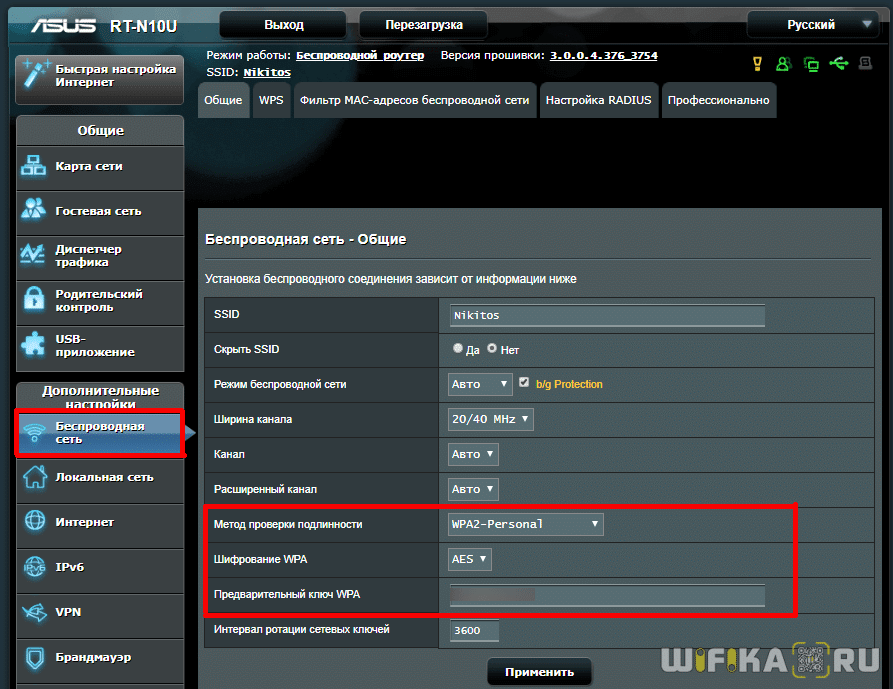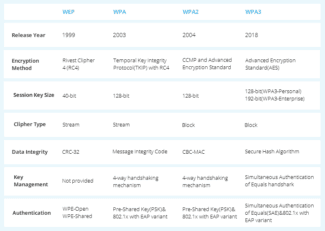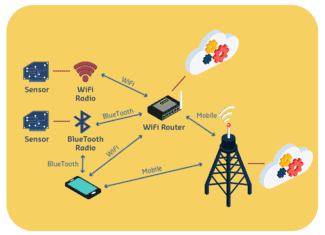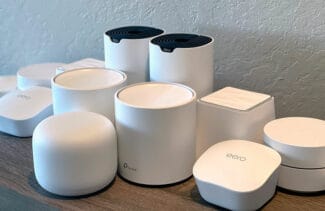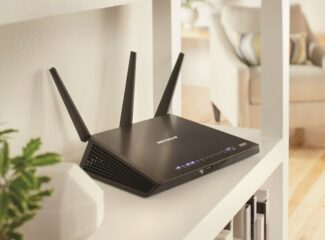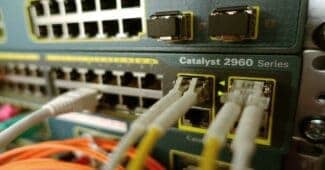There are now several wireless technologies that allow access to the Internet. Many people wonder how to decipher the name of one of them, namely Wi-Fi. This abbreviation comes from the term "wireless fidelity", which literally translates as wireless fidelity. When implemented, special equipment operates on the basis of high-frequency radio waves.
- The main differences between types of Wi-Fi routers
- Advantages of Wireless Internet
- Basic functions, or what Wi-Fi is for
- How Wi-Fi works
- What is WPA3-PSK?
- WPA Encryption Type – TKIP or AES?
- What type of encryption and WPA key should I choose for my WiFi router?
- Wireless security on the TP-Link router
- The authentication method on the ASUS router
The main differences between types of Wi-Fi routers
It is possible to distinguish among the variety of gadgets several types of Wi-Fi-routers, which are used for wide consumption. Numerous manufacturers offer different models of routers. For this reason, ordinary users may have difficulty choosing routers. In general, devices differ in cost, manufacturer and technical characteristics. Some routers distribute a high-speed Wi-Fi signal, while others use an outdated standard where the speed does not exceed 11 megabits per second.
It is important to note that for the successful operation of wireless Internet it is necessary to take a balanced approach to the choice and purchase of the router. If you don't meet such a simple condition, the user will have to experience a number of problems, among which are permanent failures and connection disconnections, inability to download and transfer large amounts of data, watching TV via the Internet protocol, weak signal in the rooms remote from the device.
Wireless Internet gadgets come in a variety of price segments. The right choice will allow the user to avoid large monetary expenses. Often, budget-class devices with the necessary parameters give out a Wi-Fi signal no worse than expensive routers, satisfying all the needs of users.
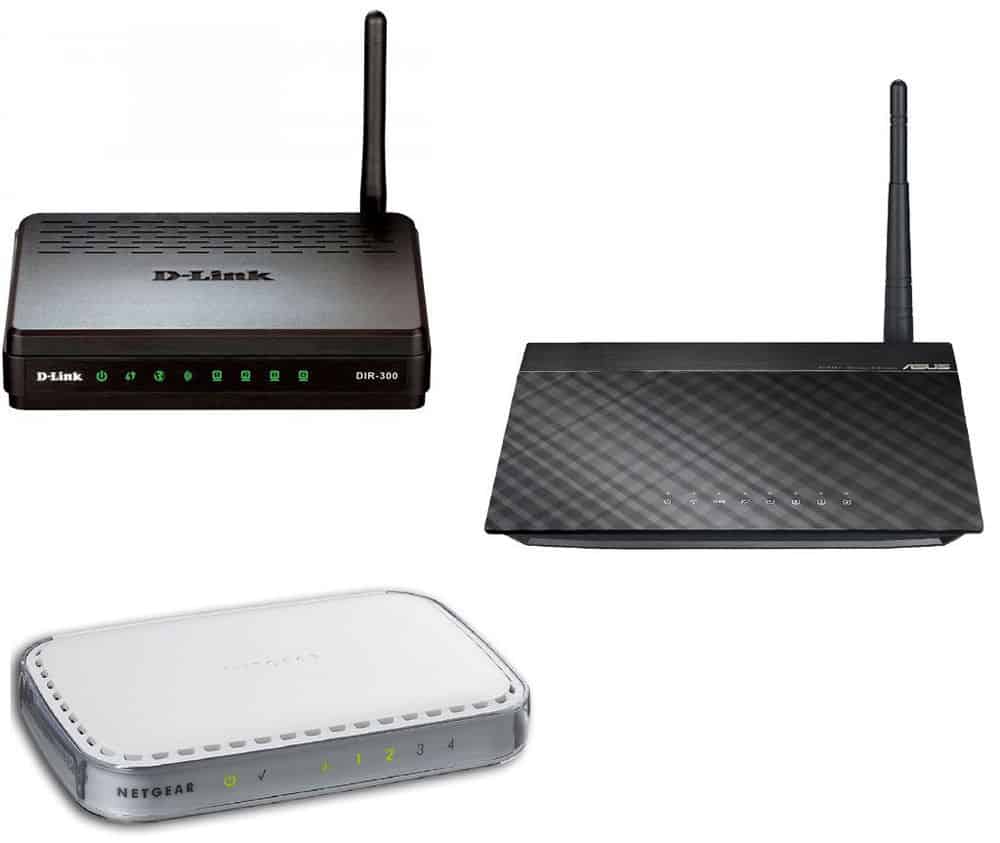
The difficulty of choosing a router is a large number of criteria and characteristics
Advantages of Wireless Internet
Wired Internet, which has existed for more than a decade, has firmly entered the life of every third inhabitant of the Earth. For this reason, there was a need to facilitate access to the World Wide Web. So appeared Wi-Fi routers, whose main task was to convert the signal into wireless and its distribution "in the air", because it is very convenient. In general, it is possible to note such advantages of wireless Internet:
- The absence of a huge number of wires in the house.
- Possibility to use Wi-Fi on several devices in parallel – desktop computer, portable laptop, tablet or smartphone.
- High connection speeds that are available today.
- Reasonable cost of routers.
- Routers for the most part support various parameters of the Internet connection provided by providers.
In general, routers can be divided into two types. The first are connected to a cable that transmits a wired signal. The second type has appeared relatively recently. Such gadgets are used for 3G and 4G connections. The sim card of the mobile operator that provides this type of service is installed in them. Among the disadvantages of devices connected to the cable, include the lack of mobility and the inability to move the router outside the house or apartment. They are designed to distribute Wi-Fi only in the place where they are installed. 3G and 4G routers can be moved to use the Internet within network coverage. The area of high-speed 3G and 4G wireless Internet coverage depends on the level of technology development of the country and the operator providing the service.

It is worth noting that there are routers that are designed to connect corporate Wi-Fi with seamless roaming. Such devices are installed by organizations when they need to provide wireless Internet to a large number of users. The coverage of such routers is much wider than gadgets designed for home use. Of course, the cost of routers for corporate use is much higher.
Basic functions, or what Wi-Fi is for
Many users don't quite understand what wi-fi technology is, even though they've had it at their disposal for a long time. By definition, it is one of the methods of wireless communication used in computers, phones, tablets and other devices.
What it looks like: it works from an equipped access point with antennas that emit waves that reach the consumer. The client device with which the connection is made is part of the wireless network. Having all this necessary hardware allows you to create a connection to the Internet and use it.
Such a possibility of transferring information is not only the Internet, but also other types of communication, including streaming video.
- use in the field of security, control of access to premises and areas;
- communication, video communication;
- convenience for mobile communications: phones, tablets, laptops;
- remote control of devices.
Internet gives access to various sites by connecting through special equipment.
What is a Wi-Fi network is a variety of devices that provide this opportunity. In particular, devices called routers are used.
This is how sites are accessed without wires. Moreover, several devices can participate in the connection: smartphone, tablet, laptop, phone, video camera and others. With their help, it is possible to simultaneously use the Internet while distributing via radio channels.
To understand what Wi-Fi is, it will help to consider the principle of operation. In fact, it is implemented on radio waves in a certain range.
How Wi-Fi works
With the help of technology digital data is transmitted via radio channels at high speed, comparable with the parameters of a cable network. Today, houses, cafes, hotels, subways are being equipped with it, and the number of points around the world is increasing.
Many devices can not only receive, but also distribute wi-fi. The radio network is notable for its accessibility, many users can be connected to it at the same time without compromising the quality of the connection.
To understand how Wi-Fi technology works, you can use it directly. To have it in your home, you need to get a router. It will be connected to the Internet cable, through which go the signals, which become the network wi-fi.
Then it is possible to transmit them to the phone, TV or computer. Several devices are seamlessly connected to each other without cords. By creating a local network, they function on a medium such as a radio wave.
For the security of the connection when accessing the Internet is recommended to install programs – anti-viruses and the use of a password.
Thus, the scheme of such a wireless network consists of two elements: an access point and a client. In the other case, the connection is made between two computers (PCs) without an adapter. The user's hardware gets in range and analyzes the signal when it occurs to see if the connection is possible.
The client will not see the network unless the transmitter provides an identifier. For example, protection in the form of a password is set.
Sometimes the coverage area includes a number of identical wireless points. Then the receiver will automatically choose the ones which give the best signal. At home, such hardware could be a router that gets the right to enter through the cable. The traffic is then converted into radio waves.
Distribution is done in the form of radio signals of a specific frequency. The cell phone (or laptop) decrypts them, obtaining the data.
What is WPA3-PSK?
The encryption standard WPA3-PSK has appeared quite recently and has replaced WPA2. Although WPA2 is known for its high security features, WPA3 is not vulnerable to being hacked. All modern devices already support this type – routers, access points, wifi adapters, and others.
WPA Encryption Type – TKIP or AES?
So, we have decided that WPA2/PSK (Personal) is the best choice for network security, but it has two other types of encryption for authentication.
- TKIP – this type is now obsolete, but it is still widely used, as many devices of a certain number of years of production only support it. It does not work with WPA2/PSK and does not support WiFi 802.11n.
- AES is the latest and most secure type of WiFi encryption.
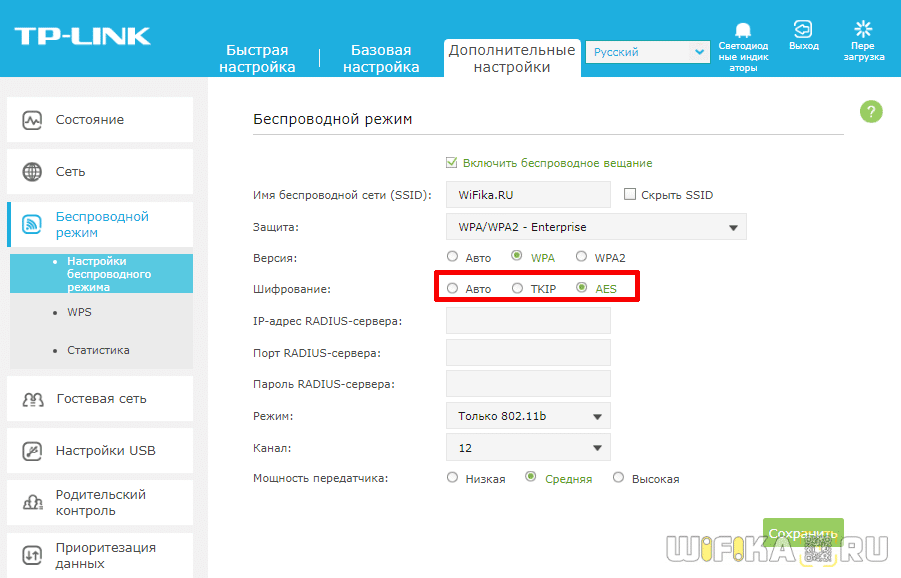
What type of encryption and WPA key should I choose for my WiFi router?
The theory is solved – let's move on to practice. Since WiFi standards 802.11 "B" and "G", which have the maximum speed of up to 54 mbps, have long been out of use – today the norm is 802.11 "N" or "AC", which support speeds up to 300 mbps and higher, then it makes no sense to consider using WPA/PSK security with the TKIP encryption type. So when you set up a wireless network, set the default
Or, as a last resort, set the encryption type to "Auto" to allow the connection of devices with an outdated WiFi module.
In this case, the WPA key, or simply put, the password for connecting to the network must have from 8 to 32 characters, including English lower- and upper-case letters, as well as various special characters.
Wireless security on the TP-Link router
The above screenshots show the control panel of the modern TP-Link router in the new firmware version. The network encryption configuration here is located in the "Advanced Settings – Wireless Mode" section.
In the old "green" version the WiFi network configurations we are interested in are located in the "Wireless Mode – Security" menu. If you do everything as shown in the picture, it will be great!
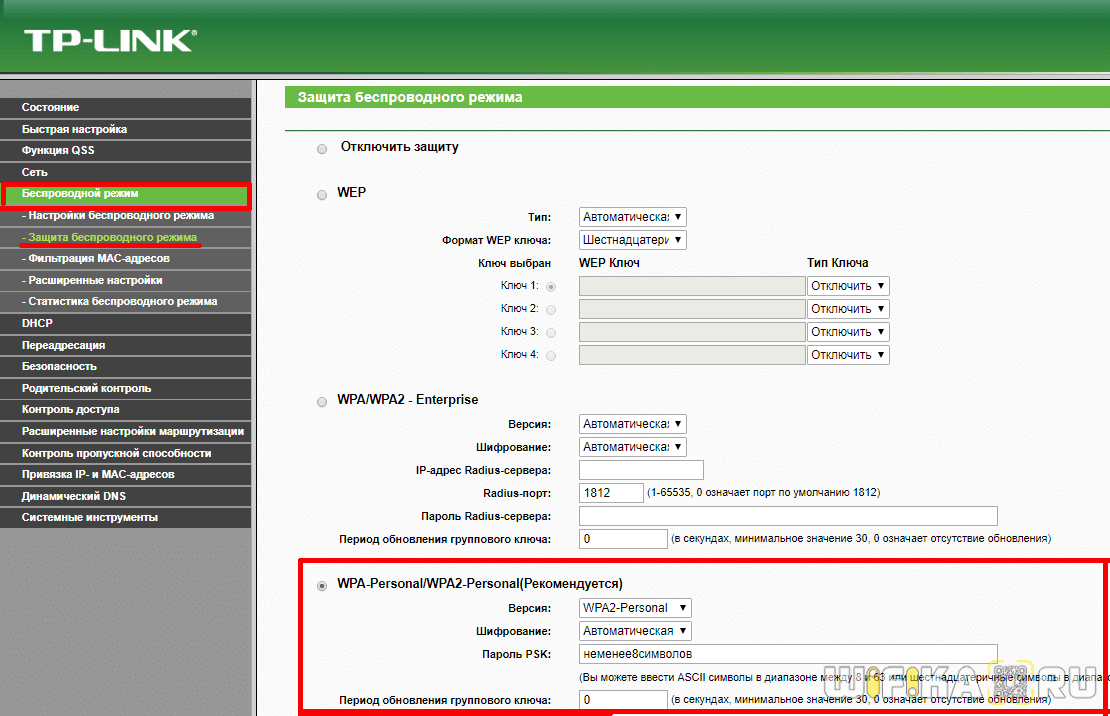
If you have noticed, there is also such an item as "WPA group key renewal period". The point is that the actual WPA digital key for connection encryption changes dynamically for better protection. Here, you set the value in seconds, after which the change takes place. I recommend to leave it untouched and leave it as default – the update interval differs from model to model.
The authentication method on the ASUS router
On ASUS routers, all the WiFi settings are located on the same "Wireless Network" page
